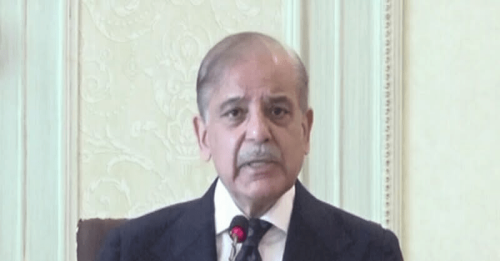As the federal tax collection in first 11 months of this fiscal year shows a record shortfall of Rs447 billion and current expenditure surges, the challenges to mobilise resources for development spending are becoming more formidable.
On the external sector too, the situation is not encouraging. The International Monetary Fund’s Fiscal Monitor for April advises governments of the emerging markets, such as Pakistan, that with global growth slowing down and uncertainties rising they should balance fiscal policies to prepare for potential downturns, balancing stabilisation and sustainable objectives.
The question arises: will it be possible to mobilise Rs1.837 trillion earmarked for the country’s overall development spending (including provinces) planned for the next fiscal year?
The lowest growth rate has been planned for industry though it leads to expansion in all sectors of the economy
Notwithstanding the ambitious revenue target for next year, this year’s performance of the Federal Board of Revenue (FBR) tends to dampen hopes. However, there is also a reported move to cut the civilian budget by 5 per cent for next fiscal year.
A sweeping decline was posted by the FBR under all heads of taxation — customs, income tax, sales tax and federal excise duty. This shortfall is widening. In May, the gap between collection and target was Rs85.6bn.
In 11 months, Rs3.303 trillion was collected against Rs3.751tr for comparative period last year. During the same period, the government’s vigorous campaign against tax defaulters, non-compliant high-net-worth individuals yielded a mere Rs13.5bn.
According to the IMF report, the country’s gross financing needs are estimated at 42.3pc of GDP in 2019 as budget deficit rises to 7pc and maturing of debts shoots up to 35.1pc of GDP.
The financing needs are expected to reach 46pc of GDP in 2020 on account of anticipated increase of budget deficit of 8.7pc and maturing of debts expected to touch 37.2pc of GDP.
Apart from the issue of resource mobilisation, the growth strategy is a mere continuation of the past that has failed to remove sectoral imbalances and harmonise their growth. The targeted 4pc GDP growth for next fiscal year is expected to come from increased output of 3pc in agriculture, 2.2pc in industry and 4.8pc in services sector.
The problem is that the commodity producing sectors underperform — contribute under 40pc of GDP — outpaced by the growth in the services sector with a share of over 60pc of GDP.
The services sector may also come under further pressure next year by continuing rupee depreciation, falling imports and tight monetary policy designed to depress domestic demand.
The lowest growth rate has been planned for industry even though it leads expansion in all sectors of the economy. Industrialisation, particularly manufacturing, is the main vehicle for boosting export earnings, achieving import substitution and self-sufficiency, and creating jobs. It also provides the bulk of tax revenues. Yet, the promised national industrialisation policy has yet to materialise.
Agriculture, which is considered as the backbone of the economy, feeds industry with raw materials while the countryside provides markets for finished industrial goods.
Given favourable climate and improved water supply, the agricultural output, low for this year, may recover next year but agriculture manufacturing will remain weak as investments are likely to be subdued.
There is no policy for harmonised inter-sector growth barring the allocation of 64pc of the ambitious Rs925bn federal Public Sector Development Program me (PSDP) for the infrastructure. Apart from public sector organisations’ uplift programmes, the development spending includes Rs250bn alternative funding through public-private partnerships.
The proposals for social safety framework including Ehsas and nutrition have been withdrawn by the Planning Commission, pending creation of a social sector ministry.
A paltry sum of Rs21bn has been earmarked for planning and housing. The role of the commission, responsible for economic development, has been overshadowed by the 39-month IMF stabilisation programme steered by the financial team headed by Dr Abdul Hafeez Shaikh.
Independent economists say both poverty and unemployment will go up over this period.
That development leads to industrial diversification, economic fortification (sustainable growth) and protection from downturn, is forgotten. Economist Amartya Sen points out that “economic growth is one aspect of the process of economic development.”
It is usually recognised that growth deals with increase in output and development encompasses both growth and welfare values.
An eminent development economist sees ‘excessive financialisation’ as one of major factors responsible for low growth and high inequality. A study in 2017 by senior SBP researchers shows that over the previous 25 years, the ratio of private sector credit to GDP by banks had shrunk even in absolute terms. It stresses that harnessing traditional finance-growth nexus is a serious challenge.
The growing fiscal deficit is providing banks an opportunity to invest in government papers with liquidity provided by the SBP. Interest rate hike does not discourage government borrowings.
“Inequality is the scourge of our times,” wrote Rolf Paasch and Abdul Qadir of Friedrich Ebert Stiftung in the forward of Volume I of the book Growth and Inequality in Pakistan written by Dr Abdul Hafeez Pasha. In developing countries like Pakistan they observed that low growth and inequality feed on each other.
Published in Dawn, The Business and Finance Weekly, June 10th, 2019













































